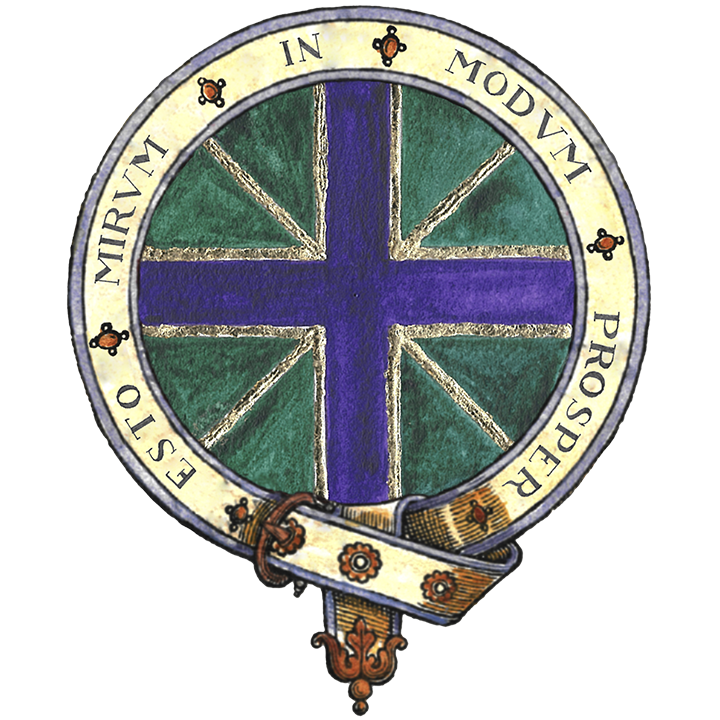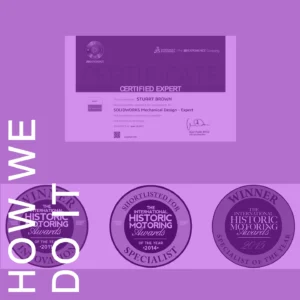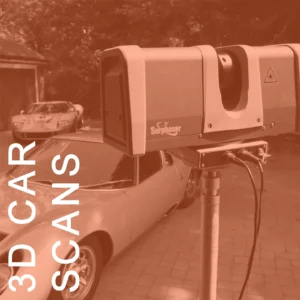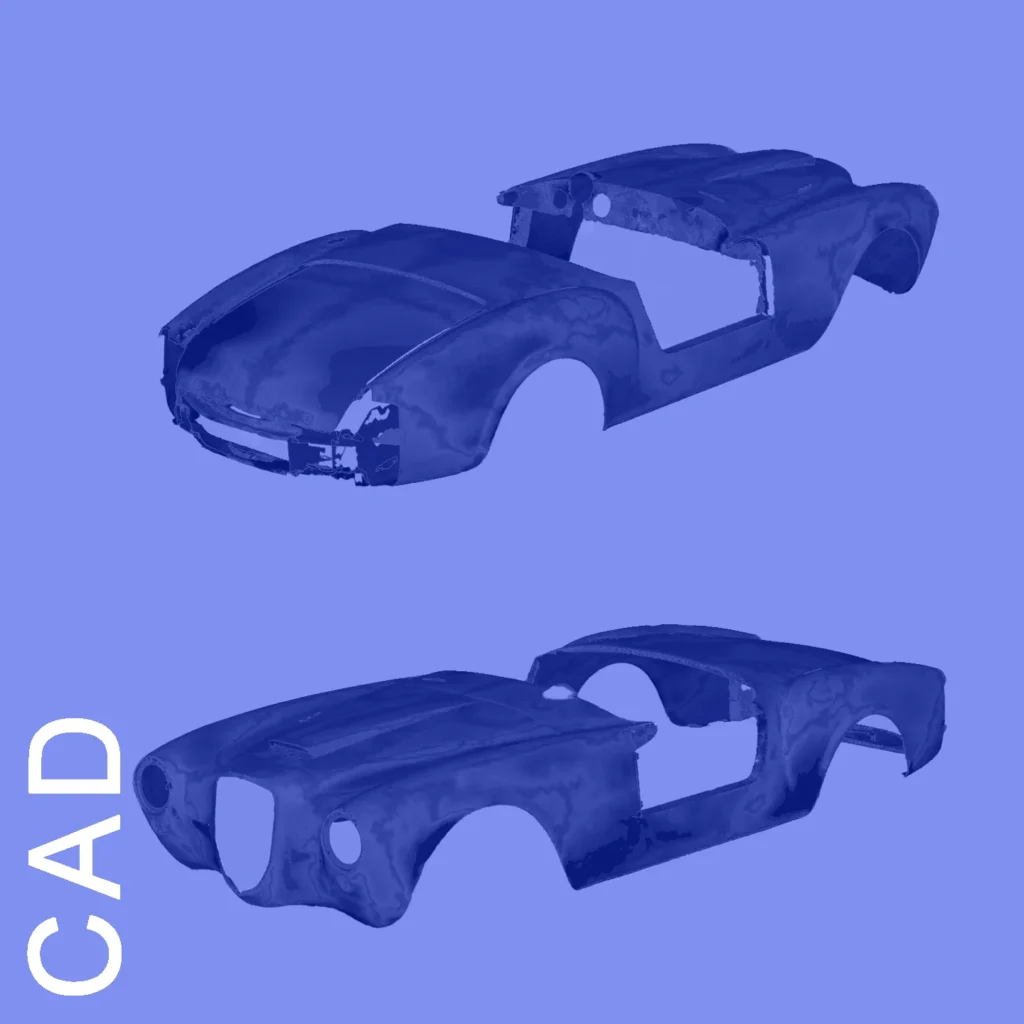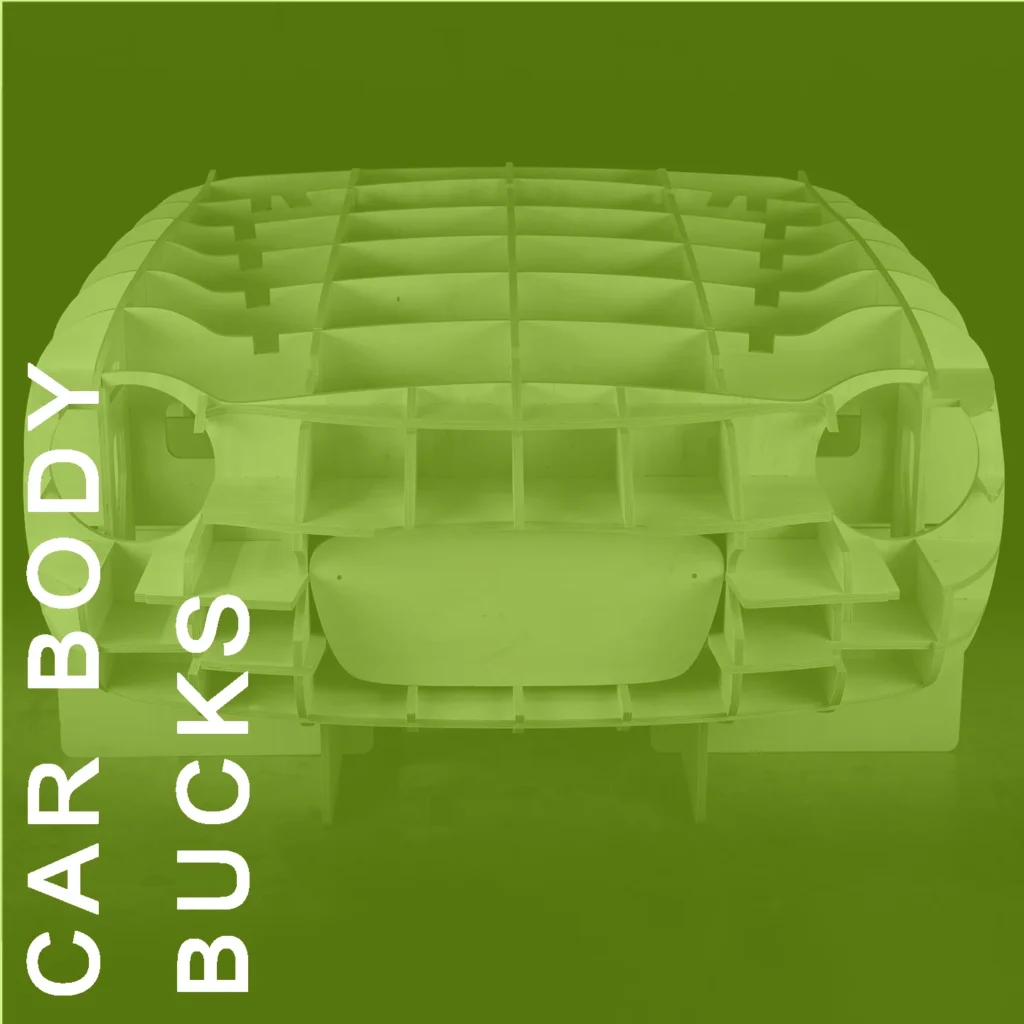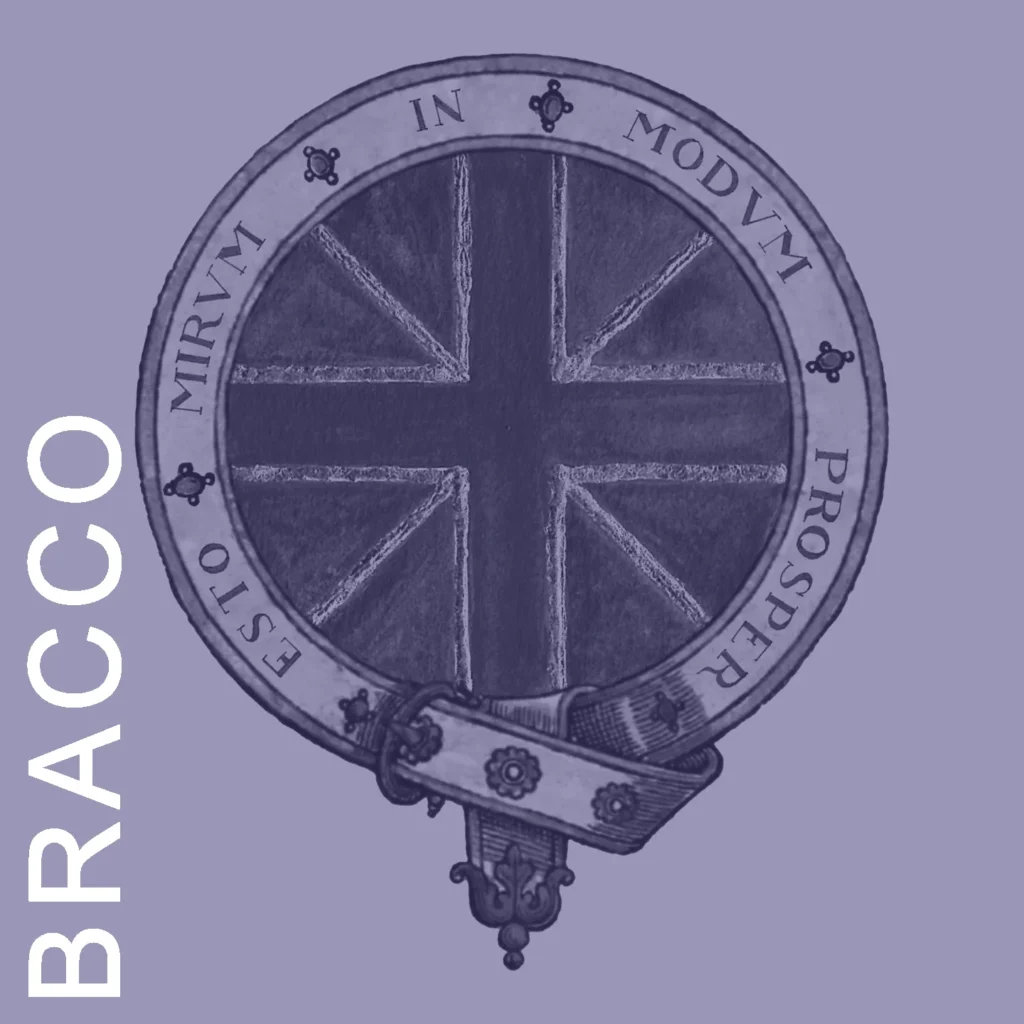Bugatti Type 35 research of a 1924 car. Reverse engineering world first.
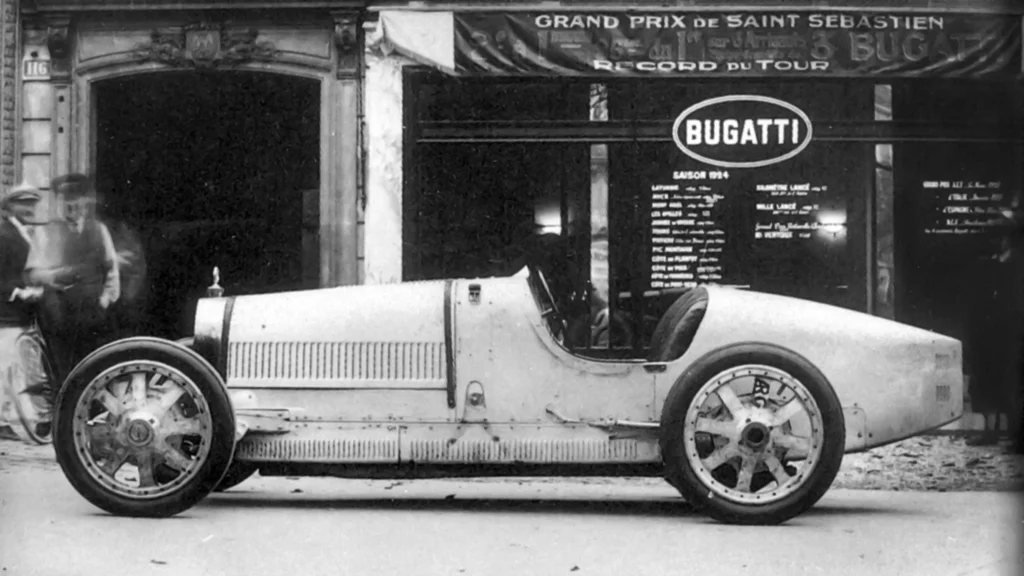
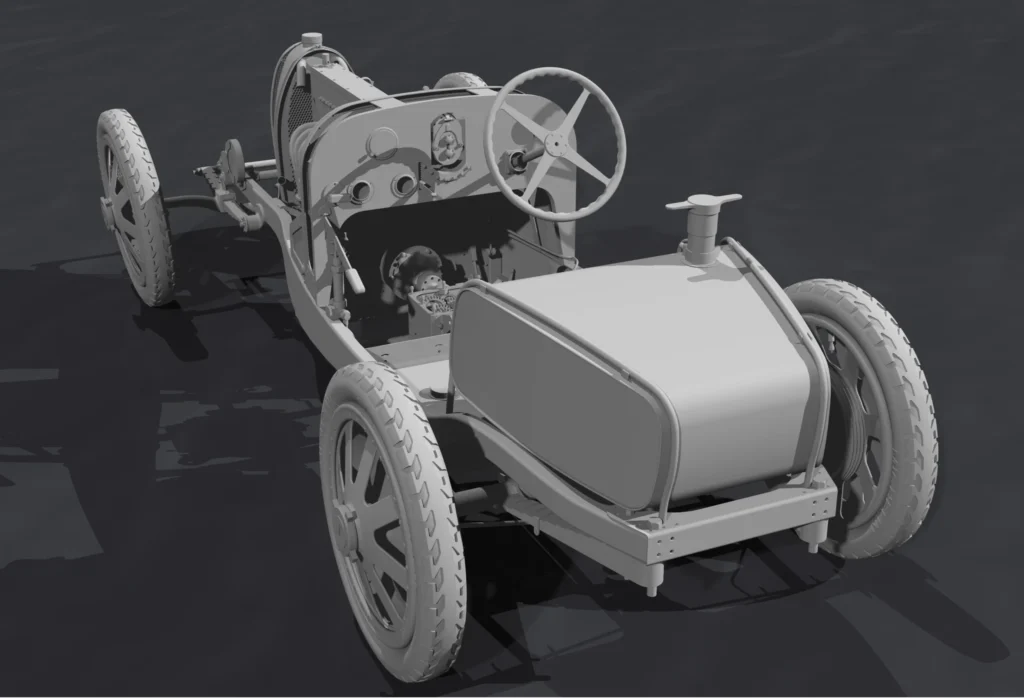
BUGATTI TYPE 35 – HISTORY
The Bugatti Type 35 was Ettore Bugatti’s best design and arguably the most successful Grand Prix car ever having won an incredible number of races.
The design of the car had many innovative features, including a hollow front axle to reduce unsprung weight and solid alloy wheels at a time when wire wheels were normally fitted.
This car could achieve 110mph and was designed on lightweight principles, at a time when the commonly accepted belief was that heavier cars held the road better.
PROJECT GOALS
Forte Vision, as Stuart Brown and 3D Engineers, started this research project in 2005 in conjunction with The Bugatti Trust. The Bugatti Trust are the custodians of much Bugatti history.
The principal goals were:
- For Forte Vision and The Bugatti Trust to be the first people to digitally recreate an out of production car.
- Create via 3D models of the parts an accurate set of historical documents that could be cross referenced with original drawings and physical parts to allow accurate performance data and historical research to be carried out on the Type 35.
- Enable owners of this type of Bugatti to verify that their cars are to an original specification and allow them to obtain parts that are produced more accurately and to the correct material specification.
- Prove that 3D modelling of old designs has a measurable and important role to play in the study and maintenance of older designs.
- Show to the younger generation that engineering does not have to be boring and that it encompasses many areas of interesting study and work.
- To create the most historically accurate record of an early Bugatti Type 35.
METHODOLOGY
The Bugatti Type 35 changed throughout its life, so early on in the project it was decided to create a version of the vehicle produced between 27th November 1924 and sometime up to the end of December 1924.
The reason for this decision was:
- Up to chassis number 4421 (produced in December 1924) Bugatti Type 35’s had wooden in fills to the dumb irons.
- From 27th November 1924 the helical ramp ignition advance was used.
- Up to the 17th chassis produced at the end of 1924 (it is a moot point whether 4421 was 17th or 16th but it is the last 1924 car – important to me) lots of changes were made. The vehicle specification became standardised as of this point.
It is understood that there are only four surviving cars that meet a “loose ” standard early build criteria and these are chassis numbers 4332, 4392, 4393 and 4421. Chassis number 4421 is the vehicle we are ideally basing our reverse engineering project on, being the last early car and first standard built vehicle.
The Bugatti Trust had the foresight to obtain and scan into a computer the original works drawings for the Bugatti Type 35.
The task Forte Vision committed to was accurately converting all the drawings into a 3D format. Then, using pictures and anecdotal evidence design the parts that had no or simply incomplete drawings, research their origin and either obtain the parts plans from the original supplier or get an original part. Alternatively, use a 3D scanner to obtain the data to recreate it in a modern 3D format.
This task was complicated by the fact that some of the drawings – being older photocopies scanned into a computer – were poor quality and extremely difficult to obtain accurate data from. Drawings such as those for the bodywork, carburettors were missing altogether or innaccurate. Almost all the drawings were annotated in technical French.
In total, there were over 800 unique parts, all inter-related with each other. Forte Vision’s approach was to systematically obtain all the drawings. The annotations were translated into English with considerable help from Richard Day the curator of The Bugatti Trust. We then methodically traced all the features of the drawings using a technical drawing pen to bring out the detail before converting the information into a 3D file. The files could then be translated into numerous file formats.
As the project progressed, the project leader Stuart Brown held regular meetings with the curator of the Bugatti Trust Richard Day and also Geoffrey St. John, a gentleman who’s knowledge of the Bugatti Type 35 was unrivalled. Hugh Conway also contributed to ensuring that the project remained on track and both his and Richard’s personalities moved the project forward.
The purpose of these meetings was to ensure that we maintained the design intent of Ettore Bugatti’s drawings and incorporated features that were not present in the drawings but none the less were present when the part was manufactured. For confidentiality reasons we cannot disclose the features, but, for example, the Bugatti aluminium wheel possesses features that do not appear in the drawings but appear on the finished part.
Methodically creating each individual part paid dividends, in that as the project progressed and parts became assemblies we were able to cross-reference dimensions thereby gradually building up a strong design intent and part history. Errors were eliminated and the corrections noted as dimensions open to interpretation.
Our attention to detail even extended to creating templates for the original unusual Bugatti thread types.
Once a part had been created, all relevant design information was added to the parts book.
For each part the book has an eDrawing, an electronic file, references to factual information used to create the part, the material the part is made from and its original Bugatti part number.
TIMELINE & SECURITY
From start to finishing the parts, has taken over 8000 hours and around 10 years.
Now that the parts have been created, the next phase of the project can begin, which is analyzing the design. This has proved a difficult aspect of the project, as the Bugatti Trust quite rightly do not want replicas popping up all over the place and for our part, 3D Engineers did not want all the hardwork copied by someone else for financial gain. An important part of our collaboration with the Bugatti Trust was to use our computer knowledge to ensure the design information could only be accessed for genuine reasons.
PRESS
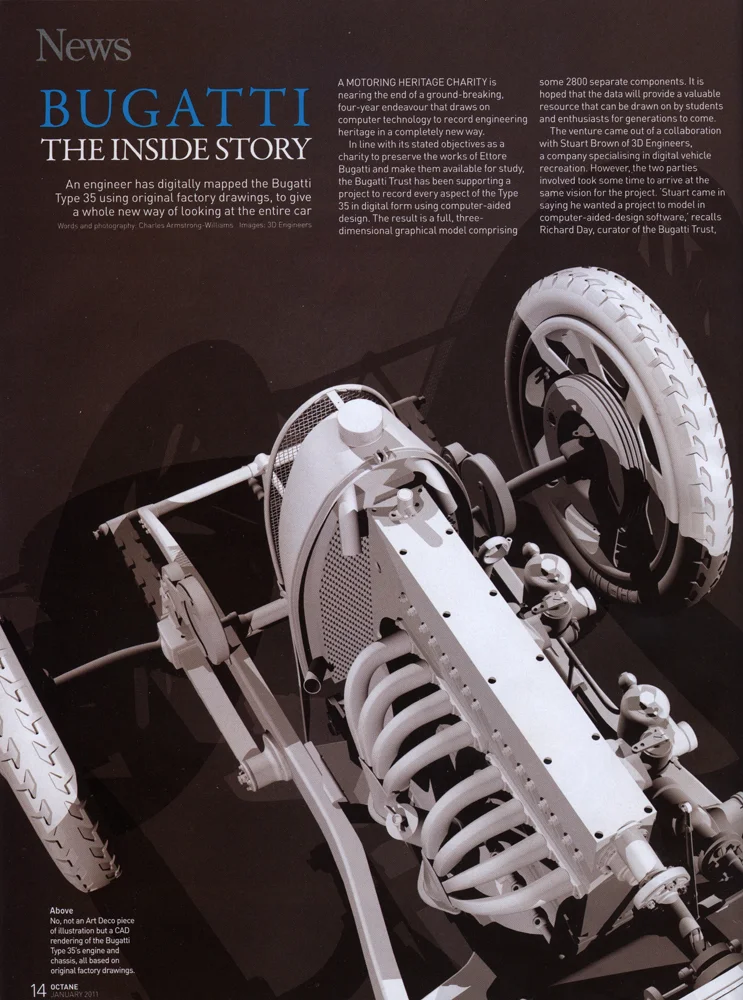
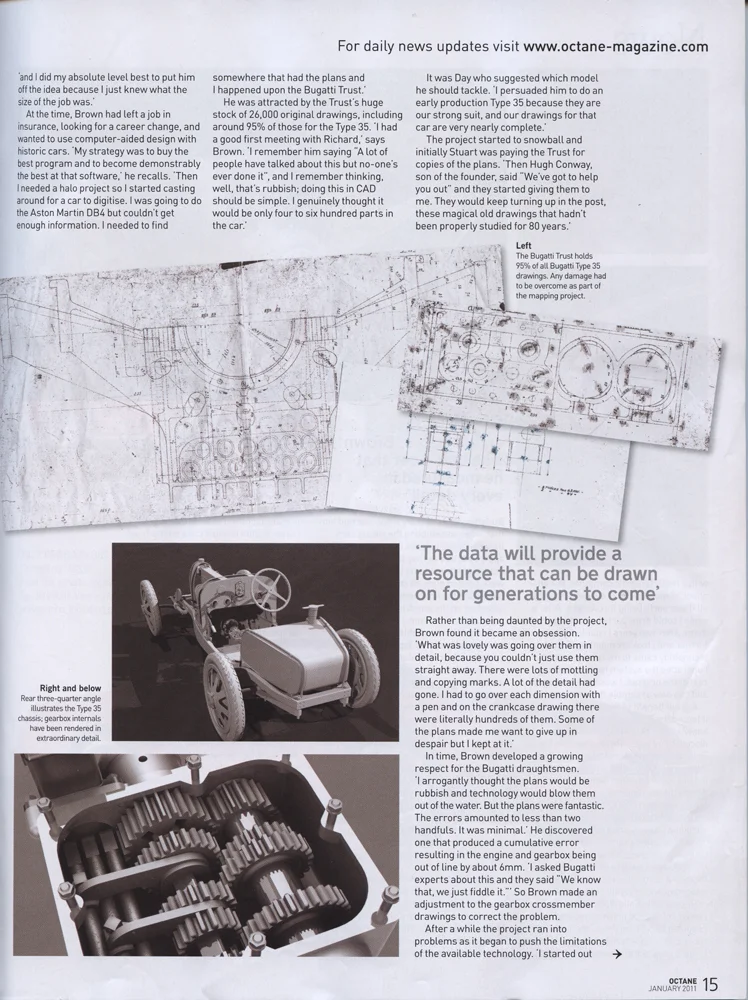
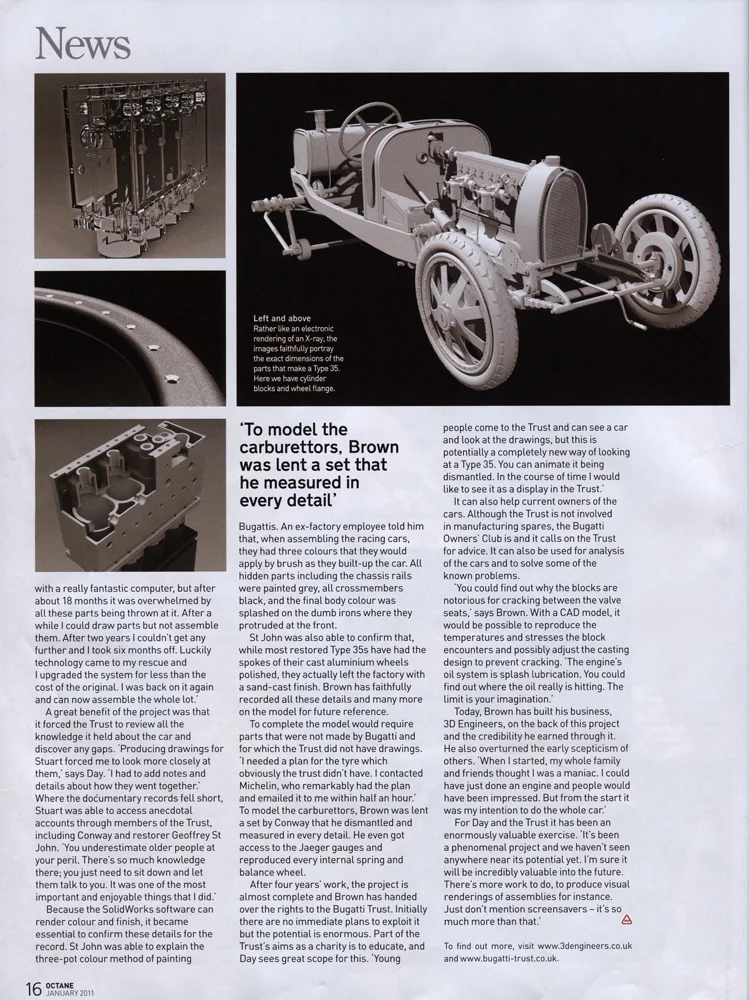
THE FUTURE
The ultimate goal of the project, as stated above, was to create the most historically accurate record of the Bugatti Type 35 Grand prix car. This has been achieved.
The main future goal is to create the Bugatti Type 35 as a virtual system and simulate in real time how the car as a whole reacts under particular loads and situations. For example, if it is run at a constant speed of 70mph, at an ambient temperature of x degrees 1000 feet above sea level in fourth gear for 1 hour, what happens? Does the water temperature get too high? Does the gearbox seize? If these things happen, will a change of material solve the problem? Will a design amendment correct the problem?
Finding answers to these questions is our goal. I hope this resume of the project has proved useful. Should you have any questions or if you would like us undertake a similar project for you, please contact [email protected].
For further pictures, animations and information on the project, please refer to www.bugatti-trust.co.uk. Better still, visit their premises at Prescott Hill near Cheltenham. Their museum is superb!
Like what you see? Then please complete the form below to start your bespoke car/body buck journey.
CARS CREATED FROM OUR 3D SCANS, BUCKS AND/OR BODY DESIGNS:
FEATURED IN
Octane – The Automobile – Road & Track – Develop3D – Classic & Sports Car – Bugatti brochure
SHOWN AT
Goodwood Revival – Goodwood Festival of Speed – London Concours – Hampton Court Concours – Pebble Beach Concours d’Elegance – Rotunda / Royal Automobile Club – International Historic Motoring Awards – REAL2015 – Techno Classica – NEC Classic Motor Show – Retromobile – Geneva International Motor Show – Beaulieu National Motor Museum – The Bugatti Trust
DELIVERED BUCKS AND DESIGNS TO
UK – France – Belgium – Holland – Germany – Italy – Ireland – South Africa – USA – Australia – Canada – Switzerland
WORKED ON SITE AT
UK – Frankfurt – Verbania – Limerick – Den Helder – Seattle – Salt Lake City – New York – Los Angeles – Las Vegas – Philadelphia – Birmingham (Alabama) – Indianapolis – San Francisco – Washington – Douglas / Isle of Man – Johannesburg – Geneva – Roggliswil – Berlin – Paris – Nice
NOTABLE PLACES WHERE WORK WAS UNDERTAKEN AND/OR DELIVERED
Beaulieu National Motor Museum – BRE: Peter Brock Designs – Simeone Museum – Indianapolis Motor Speedway Museum – Haynes Motor Museum – Thornley Kelham – Hall & Hall – Allard Cars – Shapecraft – Aston Martin Works – Mitchell Motors – Washington DC Auto Show – Geneva International Motor Show – The Bugatti Trust – Jim Stokes Workshops (JSWL) – Vintage Racing Green – Kia Design Center – Mouland & Yates – Williams Racing – Duncan Hamilton
The legals:
Forte Vision is not approved, associated, endorsed, sponsored or, in any way, affiliated with any of the businesses mentioned on this website. Any external business names mentioned are the trademarks of their respective holders. Any mention of trademarked names, businesses or other marks is for the purpose of reference only.
